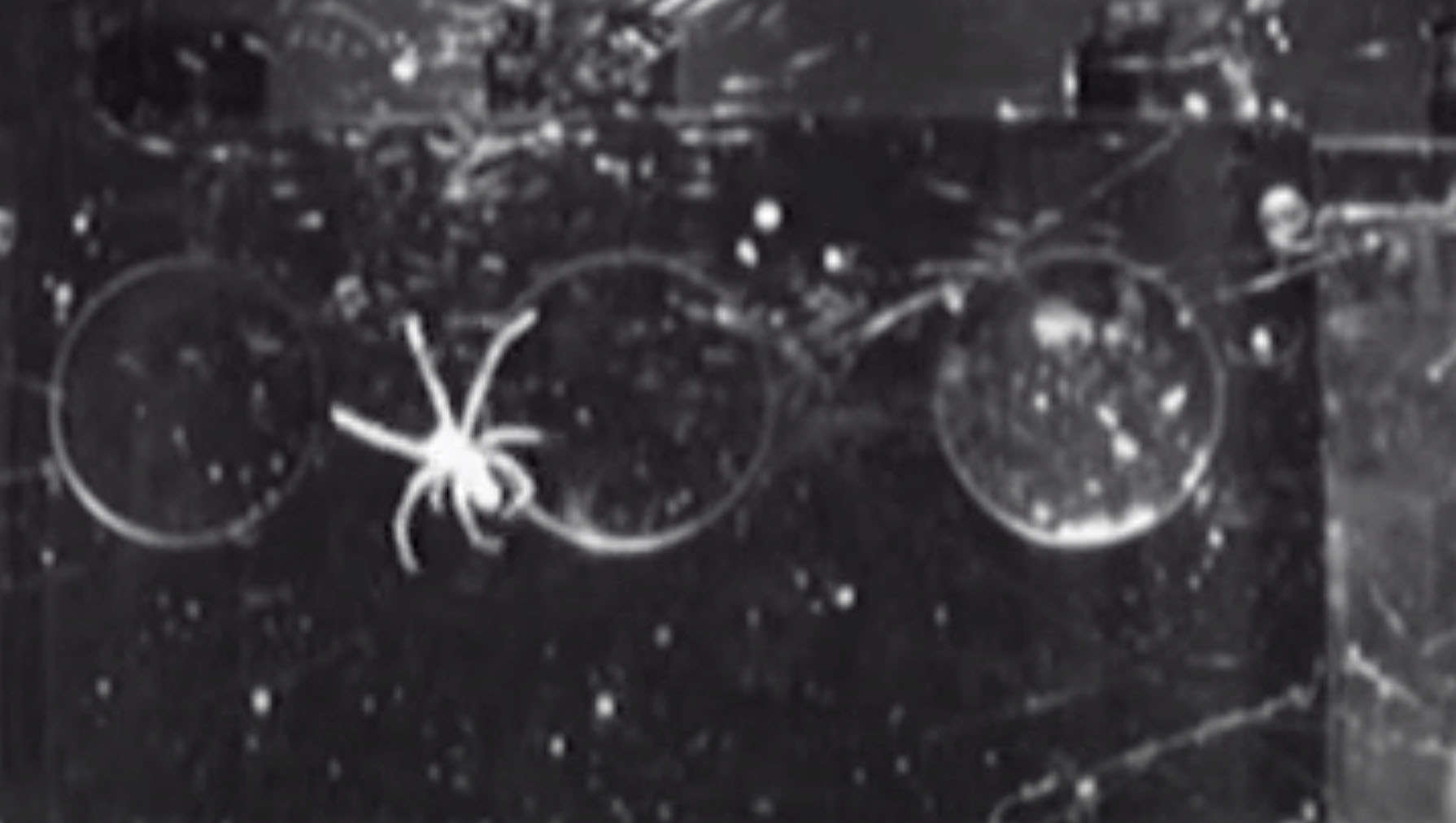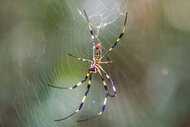Create a free profile to get unlimited access to exclusive videos, sweepstakes, and more!
Spiders lost in space think like real "arachnauts" to find their way

It’s one small step for insects, eight steps for spider-kind.
“Arachnauts” flown to the ISS have revealed their secret backup plan when they can’t use gravity to figure out where they are when spinning their webs. Earth’s gravity is what normally helps them make a web optimal for catching dinner—and position themselves in it. Lamps accidentally placed above the spider experiment showed that when the arachnids lose their orientation in microgravity, they use light to find their way again.
Light was not previously assumed to be important in the absence of gravity, but now scientists are looking at its effects through eight eyes.
"On Earth, spiders waiting for prey face downwards," biologist Samuel Zschokke, who led a study recently published in The Science of Nature, told SYFY WIRE. "In space, there is—due to the lack of gravity—no proper upwards or downwards, but we found out in our study that the spiders used in our experiment used the light as proxy for 'up', and therefore faced away from the lights when the lights were on. When the lights were off, they had no clue where 'up' or 'down' was, so they faced in a random direction."
Because spiderwebs are built as a death trap for prey, they are always asymmetrical, with more room for catching flies and other creatures below the hub (where the spider lies in wait) than above it. Spiders also orient themselves with their heads downward while hanging out on their webs. This ensures puts them in the most dangerous position, at least for wayward bugs, to snatch up a wriggling meal that gets caught in their sticky strands, because spiders run downward faster to catch prey.
Gravity on Earth is what guides a spider downward, so it is aware of how much room it is leaving for things to get entangled in as well as how ideally it is positioning itself to run over as quickly as possible when a random meal arrives. Experiments involving spiders in microgravity have been done before, but not quite pulled off as planned.
Some spiders were males mistaken for females. Others deconstructed their webs too fast. There was one memorable incident when the fruit flies that were being bred to feed the spiders multiplied at warp speed, and the observation window was soon crawling with maggots. That must have been a blast for the scientists.
The experiment that finally took off involved Trichonephila clavipes or golden orb weaver spiders, which build highly asymmetrical webs on terra firma. Because the webs of these spiders are more asymmetrical than most, it would be easier to detect a difference in web structure once the spiders were exposed to microgravity. The elongated abdomen of this species is also an advantage for observing how its orientation on the hub changes in space. Needless to say, the flies got their own habitat this time around.
Spiders are thought to have specialized organs that help them get a sense of where they are and how they are positioned, so they can spin their webs in the right direction to maximize their chances of ensnaring prey.
"The organs believed to be responsible to measure the relative position of the front part of the body to the back are slit sense organs called slit sensilla, located in the pedicel, or what looks like a 'waist' between the front and back of the body," Zschokke said.
In the absence of gravity, the orb weavers were expected to either pick a random place for the hub and face the larger part of the web from there, even if it wasn’t going downward, or to position themselves in a hub in the center of uncharacteristically symmetrical webs. They were subjected to a light period and a dark period. Light came from white LED lamps that were left on for 12 hours at a time. Spiders on Earth in similar habitats and conditions were also monitored as controls. The one thing that went wrong this time, which turned out to be unexpectedly right, was that the lights were placed over the habitat instead of at the sides.
As expected, in zero gravity, the webs turned out more symmetrical and the spiders chose hubs at random—but only in the dark.
"On Earth, orb-web spiders build asymmetric webs, with the hub being above the rest," Zschokke said. "This is again an adaptation for prey capture. In space they, when the lights were off, the had no clue where 'up' is and therefore built more symmetric webs than usual."
During the 12-hour “daytime” period, spiders apparently used the direction of the light in guiding them to build their webs asymmetrically, with more room at the bottom. They also oriented themselves in the hub with their heads down in pre-attack mode. It became apparent that when the lights were turned on, their web spinning and orientation went back to what it was on Earth. That was what gave away their ingenious backup system. If you can’t tell which direction is down, switch on the light.
“Since webs built in zero gravity were less regular than those built in normal gravity, we conclude that even though spiders were able to build webs in zero gravity, the lack of gravity did perturb web building to some degree,” Zschokke said.
Now just imagine what an eight-legged spacesuit might look like.














